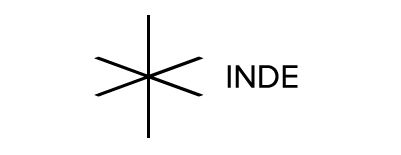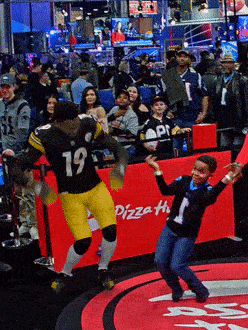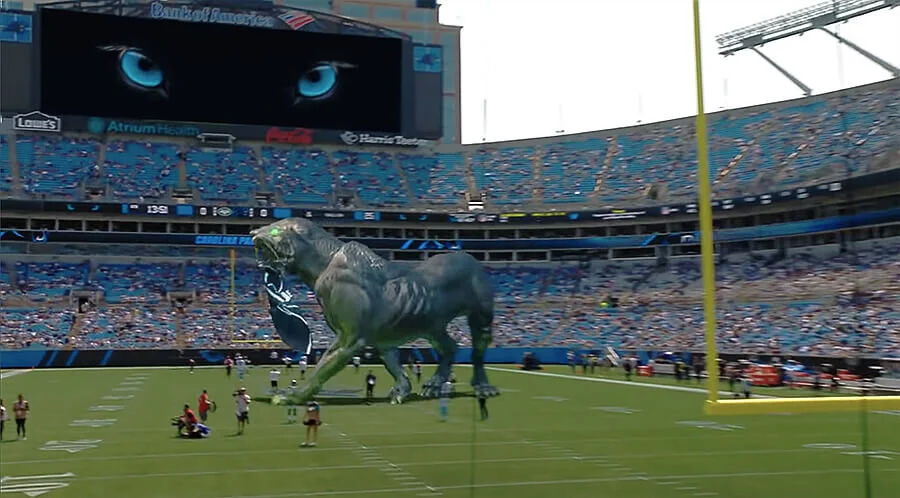Seven Ways to Improve Your Sport Advertising
Customer behaviour in the sports industry has changed significantly over the past few years. Technology has created a digital audience, meaning fans rely on their smartphones and seek constant engagement opportunities. The frenzy around personalized experiences from other industries has also made its way to sports marketing.
Marketers need to find ways to make sports events and products more personal, but doing so can be a costly venture. This article shares the best ways to improve your sports advertising in a cost-effective way that brings results.
New Challenges for Sports Marketing
According to the definition, sports marketing is a coherent and rational system that links consumers of sports to sports products. As such, marketers can use the popularity of sports to promote products, brands, and sporting events.
Stadium ads, Super Bowl ads, and the endorsements of athletes are the most common sports marketing examples. In a broad sense, sports marketing refers to the following forms of advertising:
Sport
Sports associations
Sports teams
Sports events
Promotion to the public for increased sports participation
Numerous groups can be the target audience for sports marketing:
Fans: Marketers can launch campaigns to motivate fans to attend sports events. Marketing experts also improve tactics for raising emotional and economic attachment and loyalty to the fan’s favorite teams.
Athletes: Non-professional athletes or those who do sports as a hobby can also participate in a sports marketing campaign. When a person does a sport regularly, it’s because they like it. And they’re ready to invest in better equipment even though they know they won’t be preparing for the Olympics.
Public: The public (in a broader sense than fans) is an important target audience. These people attend sports events as a free-time activity and wear merchandise made by major sports brands.
The New Challenges
Sports advertisers must pay attention to the following challenges when designing their advertising campaigns.
Higher Drive for Gamification
Gamification adds game-like features to activities like sports. The goal is to make that activity more entertaining and engaging. Gamification is present across events for marketers in all industries, and sports is no different.
Demanding Fans
Modern-day sports fans are becoming increasingly demanding. They call for more engaging and immersive experiences on and off the field. The Super Bowl is the ultimate example of how far marketers and event organizers are prepared to go to entertain their audience.
Sports Marketing Goals Shift
To reach broader audiences, sports marketing must reach people on a more personal level. Modern-day marketing strategies become more oriented toward lifestyle and entertainment.
With more modern fans spending time in front of screens, they use more online products or services. These platforms are where marketers try to get the audience’s attention and connect with them on all levels.
Shift to Inclusive Culture
Inclusivity has become integral to most modern-day industries, events, work opportunities, and sports. The marketing culture becomes more inclusive to motivate people from different demographic areas and people with disabilities to participate in sports events or be more active in sports in general.
How to Make Your Sport Advertising More Engaging
There are numerous ways to increase audience engagement
Loyalty card/Mobile app
You can create a loyalty subscription or a mobile app allowing customers to accrue points they can redeem for rewards and offers. The app could offer free shipping for online purchases or provide member-only access to events or new releases.
Make Use of Social Media
Presence on social media platforms is a surefire way to build brand awareness and brand recognition and enlarge your fan base. Build a community of sports enthusiasts, fans, and athletes where they can share their progress, read sports news, or meet new people.
Pairing with influencers to deliver valuable content is a great way to grow a community of loyal followers. Facebook, YouTube, Instagram, TikTok, and Twitter have a high potential, given that hundreds of millions of users consume content on those platforms daily.
Send Personalized Messages
An additional touch to help you further boost fan engagement online is to make the experience more personal for the audience. Speak to fans by responding to messages, sending emails and newsletters, or sharing quizzes and polls.
Increase Fan Engagement All Year Long
One of the downsides for sports marketers is that it can be months between two games. This is where you can offer non-game day engagement. Doing so creates additional channels for sports marketing campaigns and keeps the fans engaged even during the off-season.
Marketing experts should keep in mind that both athletes and fans use their mobile devices daily, and there are countless ways to keep them connected. Examples like voice or video messages from top players, real-time statistics, or replays of the best season moments can boost engagement at any time of the year.
Many sports teams turn social media pages into 24/7 informational hubs. Match highlights, interviews, and behind-the-scenes videos are some other examples of great everyday content.
Focus on Local, Regional, and Seasonal Marketing
Marketers in 2023 tend to shift towards local, regional, and seasonal campaigns. Localized content helps expand the geographical reach of the brand, meaning you can promote sports teams in different languages and schedule campaigns around important dates of the year.
For example, the Leeds United sports club from the UK celebrated the Mexican Die de Muertos to grab global attention.
Focus on Sustainability
Sustainable marketing campaigns are integral to a successful audience and industry acceptance. Brands and sporting teams work harder towards proving their eco-friendly practices that contribute to a lower carbon footprint.
Patagonia, Nike, and many other companies invest in green practices, so pairing up with sponsors like these is a great marketing strategy.
When it comes to organizing sports events, special attention is needed in terms of transport and the use of plastic. Switch to recyclable materials and consider finding sponsors that could subsidize public transport for spectators.
Use New Technologies
Extended reality and new technologies bring enjoying sports events and games to a whole new level. The XR market is growing at the speed of light, and the trend is here to stay. By the end of 2023, the consumer XR market is set to reach $18 billion. And given that the lines between physical and virtual worlds slowly get erased with Metaverse and similar tech, marketers have a new world of opportunities.
For example, experts can use augmented reality that extends physical reality via digitally generated forms, images, or objects. Fans can access these features via glasses, sensors, and similar handheld props.
INDE is an excellent example of an Augmented Reality and computer vision company that builds mobile and location-based products available worldwide.
Here are some notable examples of how sports marketers use INDE products, like HeroMirror, the premium, next-generation Augmented Reality system.
AR Photo Booths in Levi’s Stadium
HeroMirror AR kiosks at the San Francisco 49ers stadium offer a unique experience where fans can take photos with nine players of the famous NFL team. As a fan engages with the photo booth, they leave their email or phone number, making data capture effortless. Fans can share their photos and videos through their HeroMirror emails.
Visa AR Experience at the SuperBowl LIV
INDE created an AR HeroMirror fan experience that promotes the giant financial service company’s new tap-and-pay tech during Super Bowl LIV. Visa’s campaign is similar to the 49ers stadium idea where fans can take AR photos with top NFL players and share them on social media.
HeroMirror provided the opportunity for fans to meet, interact with and create unique moments with their heroes - some of the biggest stars of the NFL season. Within three days of the campaign, there were 1,602 interactions, 1.5 million views, more than 1,300 printed photos, and 1,015 shares.
Pizza Hut at Super Bowl
INDE developed a custom AR experience for Pizza Hut featuring Pittsburgh Steelers wide receivers Antonio Brown and JuJu Smith-Schuster at Super Bowl LIII.
In this campaign, the fans are invited to step in front of the large-format screen where Antonio and JuJu appeared next to them. Fans could choose from several popular dances to perform and the players would dance alongside them all in real time. After visitors could access their snapshots and videos via a dedicated microsite to share them via email or social media.
Adidas Tango League with Marcelo Vieira
A fully-interactive AR experience custom-developed by INDE for Adidas featuring Marcelo Vieira. The competitive experiences tempted soccer fans to try and impress the Real Madrid and Brazil star with their skills.
The user has 30 seconds to perform a series of tricks in the activation area in front of the camera
During this time the host can trigger Vieira’s positive or negative reactions to the user performance drill via the touchpad. When the AR experience is over, the user’s brand engagement footage is available via a simple URL, or by scanning a QR code integrated into the controller.
HeroMirror AR Experience for New York Red Bulls
INDE’s HeroMirror provides Red Bulls Fans with an exclusive opportunity to meet and create a unique AR experience with their favorite Players. These priceless moments are captured automatically by the HeroMirror AR Kiosk so fans can safely create and share those images and videos with their friends on social media instantly.
AR Experience for The Armoury & Adidas
This project for Adidas and Premier League team Arsenal featured superstars Mesut Özil, Ainsley Maitland-Niles, and Alex Iwobi, allowing soccer fans the chance to impress them with their skills.
Levelling Up Your Sports Marketing Game
Sports marketing is a dynamic activity that aligns with current trends. The numerous challenges that arise from traditional marketing can easily be solved by following the tips in this article.
INDE is your go-to partner for making the most out of new technology. Integrate AR and mixed reality into your marketing efforts to drive engagement and raise brand awareness. Learn more by visiting INDE’s official website.













